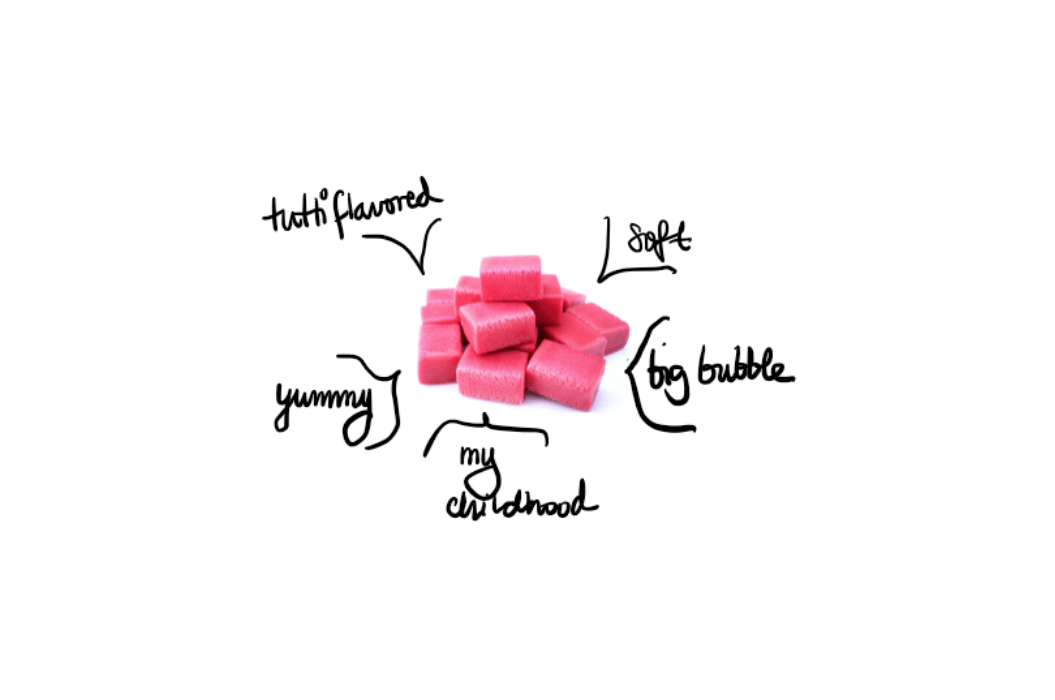How sensory analysis can help improve the texture of a gum
Our senses are changing our decisions every day. A smell, a flavor, or the sight of something appealing can make you stop or move away from some food, place or even a person.
Let’s imagine a piece of chocolate cake. Just looking at it, we see the brown color, and our brain can link this sensation to the taste of the chocolate, even when there is a glass between us and the cake. The temperature of the cake will link us to a type of texture (closer to ice-cream, for instance, if it is a cold cake).
Let’s look at it from a gum perspective…
Sensory analysis is defined as “A scientific discipline used to evoke, measure, analyze and interpret reactions to those characteristics of foods and materials as they are perceived by the senses of sight, smell, taste, touch and hearing.”
In Cafosa, we evaluate almost every sample of gum that it is made in our laboratory. In the last year, we have evaluated more than 2.500 gums. It is part of our job. We are heavy chewers (more than Violet Beauregarde in “Charlie and the Chocolate Factory”) and we blow bubbles almost every day without turning purple…

Jokes apart.
The three sensory stages in any chewing gum experience
Whenever we chew a gum, the sensory evaluation differentiates the chewing profile in three stages:
- Initial stage: It is based on the first sensations when looking, smelling and tasting the gum. It takes about ten seconds.
- Intermediate stage: During this stage, the gum gets hydrated and the saliva dissolves the bulk sweeteners together with the soluble part of the flavour. This stage takes about two minutes.
- Final stage: In this last stage, only the gum base and part of the flavour remains in the mouth. So, this is the most important time for the measurement of the gum base properties, and how it interacts with the plasticizers added (mainly, the liquid flavour). This stage can take up to 30 minutes, but it is generally reduced to ten minutes. It is very rare for the texture to change after this time.
At each stage we look at different parameters, related mainly to the texture of the gum.
During the initial stage, we measure:
- Appearance: Sensations given by sight, smell and touch about the gum (how it looks, how it smells, what the texture is).
- Hardness: We feel the initial softness of the gum, related to the gum formulation and the shelf life of the product.
- Crumbliness: We feel how the gum behaves with the first bite, whether it breaks into pieces or it remains consistent.
- Impact: We measure the speed with which the flavour gets noticed, not its intensity.
During the intermediate stage:
- Hydration: This is an opinion as to how long it takes for the gum piece to start absorbing saliva into the gum matrix. It is influenced by the initial firmness.
- Cohesion: This is a measurement of the texture of the gum at its point of maximum change during the chewing process. During the extraction phase, most gums tend to modify their texture and can either become firmer of softer. The gum can lose all its consistency or remain together in the mouth.
- Volume reduction: This value is related to the relation between the amount of gum base and the final weight of the piece, as during this stage all soluble materials are removed from gum matrix.
- Smoothness: This is an evaluation of the smoothness or coarseness of the gum. This is normally caused by the granulation of the sweetener used. The best way to feel this is to hold the gum on the upper palate and strike it with your tongue. The abrasiveness you feel is the smoothness measurement.
- Tack to teeth: This measures the adhesion of the gum to natural teeth, fillings or dentures. Usually, gum does not stick to natural teeth. At times, it does stick to fillings. Stickiness is usually a function of the tooth material or surface. Gums sticks more to worn or broken teeth and the inner surface of teeth that have been adjusted during fitting.
- Sweet taste: Sweetness is evaluated.
- Freshness: The fresh or cool sensation is evaluated separately, as it is not only related to the flavour type or level.
- Intensity of notes: Flavour intensity is valued, without paying attention to individual notes.
Final stage:
In this stage, we measure the firmness, the smoothness and the tack to the teeth, as the issues related to these parameters have different causes.
- Cud Size: We measure the volume of the remaining part (cud) in the mouth.
- Elasticity: The remaining resistance of the gum to be chewed is graded here.
- Shape: We check the shape of the gum after it being chewed.
- String: The cud is stretched to make a string, giving some information related to elasticity.
- Bubble properties: For bubble gum, several parameters are checked. The bubble ability and the other properties are very linked to the interaction between the gum base and the flavor. If the flavor does not plasticize correctly, the bubble will be affected.
Gum properties
On the other side, bubble properties depend very much on the weight of the piece, the amount of gum base and the type of gum base.
Once all these parameters are evaluated, we get a chart like the one below for each gum and we can compare different formulations.

Thus, we know how to play with the ingredients in order to modify such characteristics.
In the next article dedicated to gum texture, we will explain how the ingredients affect to the texture and the production process.
Enjoy!
